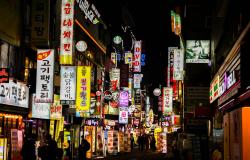Soft Power in a Post-Liberal World: Values Out, Pragmatism In?

Daniele Carminati explores how countries are using soft power to harness dissatisfaction with the current state of global affairs and challenge the status quo.
In Nye’s depiction of soft power dynamics, the appeal of America’s ideals prevailed over the Soviet Union’s and partly led to its demise. This was in the late 1980s. Fast forward a few decades, Nye’s scenario is hardly sufficient to explain current dynamics of international attraction and influence. Actors like China, Saudi Arabia, Turkey, and others are pushing for what can be described as a post-liberal understanding of soft power. Despite prominent shows of hard power, Russia is eager to regain some of its softer appeal as well. Not all these actors are moved by similar intentions, nor embracing identical strategies, but the whole phenomenon could be seen as a shift away from a predominantly liberal democratic idea of soft power, although to what extent it will be successful and last is less certain.
To begin with, it is necessary to point out that Nye himself acknowledged that the “power of attraction is not inherently liberal or Western”, but it evolves while embracing ideals and features that show greater appeal in a particular period. So, what did (and still does) constitute liberal soft power, and are its defining elements losing their appeal? What, therefore, might constitute post-liberal soft power?
Nye identified three main resources of a country’s attraction: “its culture (in places where it is attractive to others), its political values (when it lives up to them at home and abroad), and its foreign policies (when they are seen as legitimate and having moral authority).” American culture has been ubiquitous, some would say hegemonic, until recently, as Hollywood movies, food and lifestyle brands (Coca-Cola, McDonald’s, Nike), and music (too many to list) have dominated the realm of global attraction.
Japan was seen as a potential competitor, labelled as the other “Soft Power Superpower”, but it never reached American global prestige. A variety of European countries boast an enviable cultural and culinary appeal, and South Korea is emerging as the “quintessential representation” of soft power, centered on its popular culture. These countries are all supporters of liberal democratic values, although the U.S. has clearly been the leader of this grouping. The promotion of these values has also been embedded in American foreign policy, albeit selectively. More broadly, as Professor Daniel Mattingly succinctly summarized, “the idea of American democracy does not simply speak for itself anymore.”
These are just a few reasons why what was once seen as a genuine and commendable effort to improve the world is now increasingly portrayed as a hypocritical pursuit, tainted by double standards and prioritizing national interests over universal principles. As acknowledged by many observers, “liberalism isn’t dead–but it’s very sick,” and the re-election of President Trump with his “America First” doctrine may further exacerbate this situation, at least to foreign eyes.
American culture and lifestyle are still popular but no longer hegemonic, the appeal of its political values is fading along with confidence in democracy, and its foreign policy is increasingly challenged and criticized, possibly due to greater access to information and fewer chances to cover up or downplay some questionable decisions. In short, U.S. legitimacy and credibility have been compromised.
What does such a decline imply in the realm of soft power? It opens doors for competitors to present their alternative visions, particularly to audiences in the Global South. These alternatives might include traditional culture, conservative values, different political systems (potentially more authoritarian yet functional), and a new global order focused on inclusivity and pluralism. This, at least, is the core of the message: it is about time for the Rest to rise, and ‘we’ may have the solution.
In the cultural domain, deliberate efforts can be made to highlight appealing national features internationally, as exemplified by South Korea. This form of constructive competition can enhance a country's reputation and lead to economic benefits. Foreign policy too can be constructive, through cooperation and the pursuit of mutually advantageous outcomes. This is how China is selling its Belt and Road Initiative (BRI) to the world, and many countries have embraced it, while a series of competing initiatives from the U.S. and the E.U. have yet to convince. Despite “debt trap” accusations, Beijing’s connectivity masterplan has recently celebrated ten years. This blend of soft-economic strategies constitutes a powerful mix of attraction supported by incentives in the form of much-needed infrastructure but also business partnerships and professional training.
China is actively promoting a new form of soft power with Chinese characteristics, defined by pragmatism rather than ideology. Other countries are also participating in this global reputational market, aiming to enhance their national image in various ways. Many favor a blend of soft power and economic strategies, which is seen as less likely to cause backlash compared to the promotion of political values.
Middle-Eastern countries, for instance, are pursuing soft power to revamp their image beyond the preconception of oil-dependent autocracies through a variety of initiatives, such as hosting major sports events, or developing futuristic hubs to attract tourists, talent, and especially investments. Following democratic backsliding, Turkey is said to be further “blurring the boundaries between hard and soft powers [when] appropriated societal power sources” and traditional forms of state power are employed to coerce foreign audiences. Russia appears to directly oppose liberal soft power with a more conservative form while also adopting “hard soft power” strategies when disseminating anti-Western narratives in targeted countries.
These examples illustrate how nations use, misuse, and abuse soft power for specific goals. Despite their differences, these actions are often spurred by dissatisfaction with the current state of global affairs. In uncertain times, they propose pragmatic solutions, aiming to break away from the status quo. This transitional period reflects claims of multipolarity, with China emerging as a key player through combined soft and economic strategies.
When considering post-liberal soft power, many might initially think of autocratic systems, which may seem unappealing in the West. However, this type of soft power draws only partially on authoritarian traits, like the allure of strongmen with bold promises. It focuses instead on pragmatism, blending soft and economic power to attract the developing world. Currently, post-liberal manifestations of soft power are less about ideology and more about meeting the Global South's desire for benefits from geopolitical changes and amplifying their voice.
The main question is: what constitutes soft power in the current international arena? In this period, attraction originates from a blend of realistic opportunities towards a better future arising from economic prosperity and a more just and equal global environment. In other words, more than the West being “vs. the Rest”, the latter is with whoever can (truly) provide for them.
In the long term, deeper changes can lead to a whole new set of values and ideals supporting a novel understanding of soft power in line with a revamped global order. That said, this current post-liberal phase may be transitional, but it can also be an adjustment period towards an even stronger democratic era, one in which liberal values are back in. Turbulent times demand changes, but not necessarily revolutions. The appeal of change is a strong driver. How it will be used is yet to be determined.
Daniele Carminati, Lecturer, International Relations and Global Affairs, Mahidol University International College.
Photo by Pixabay


